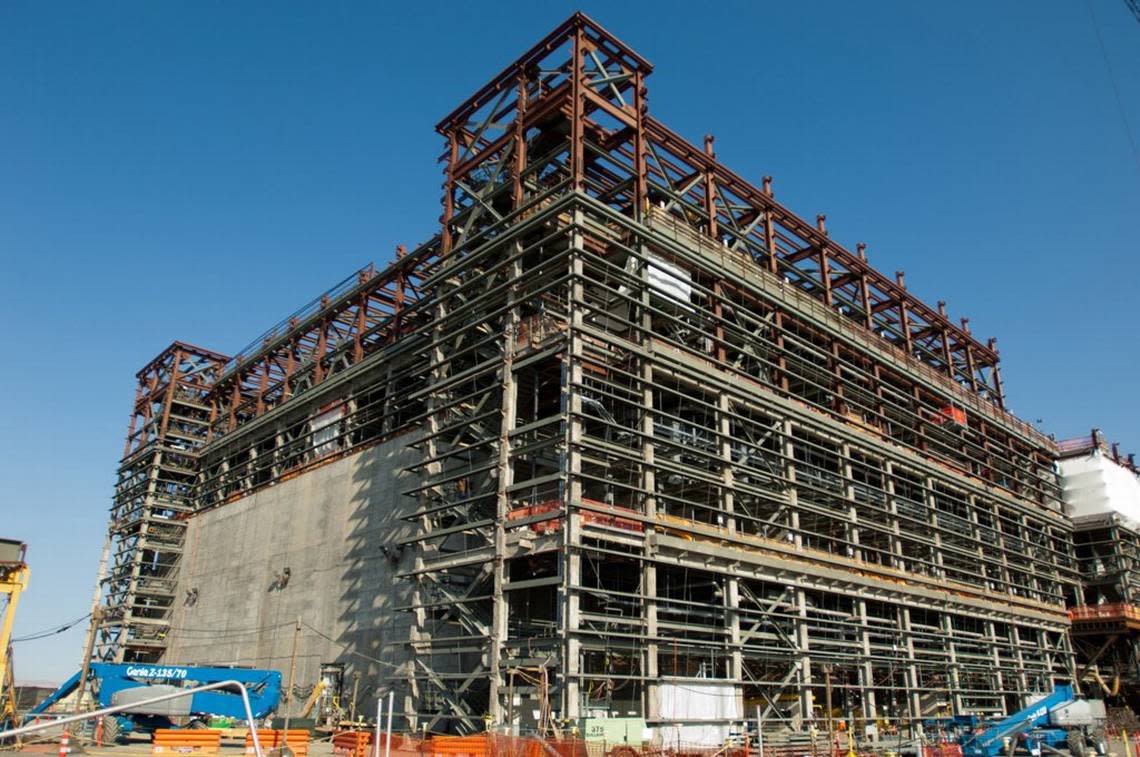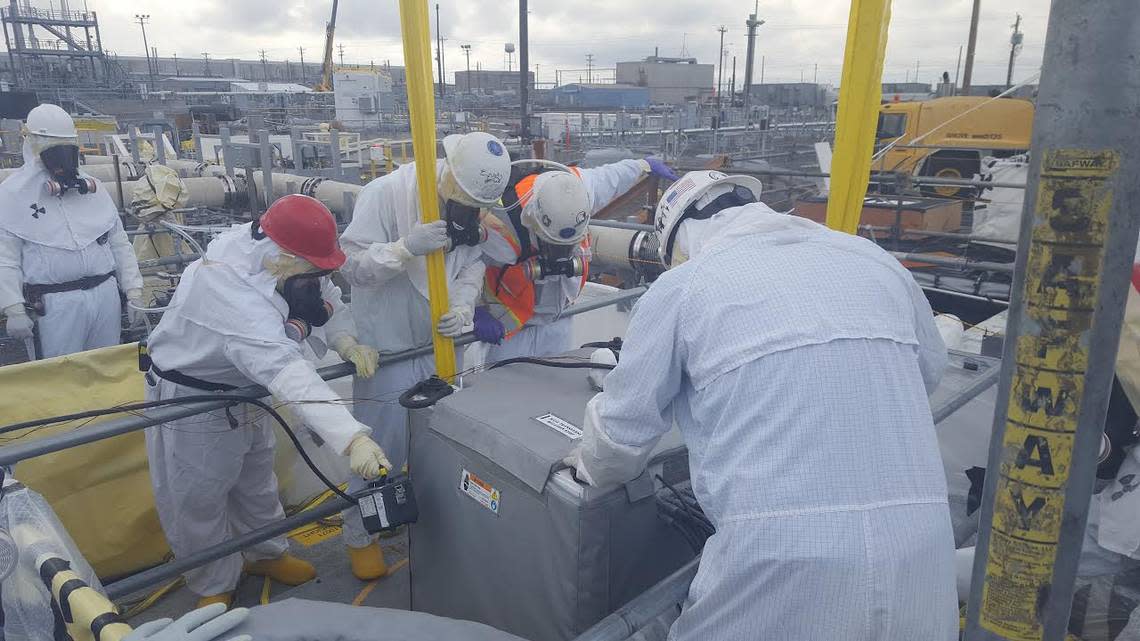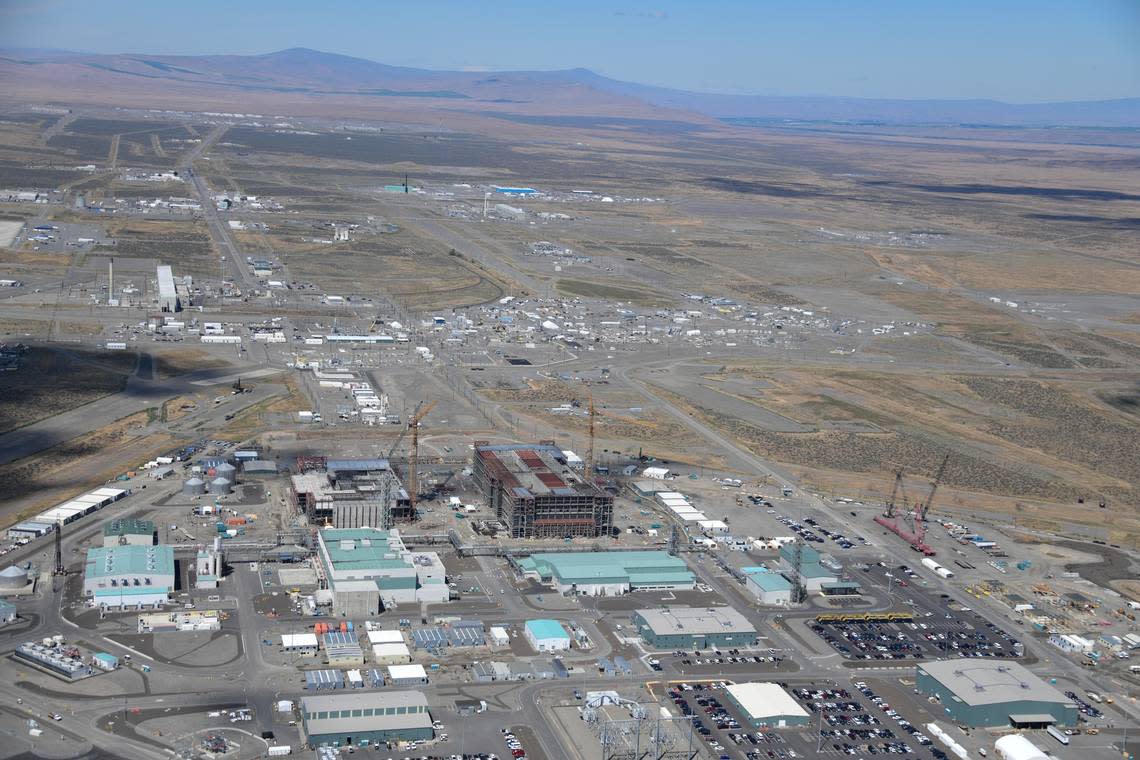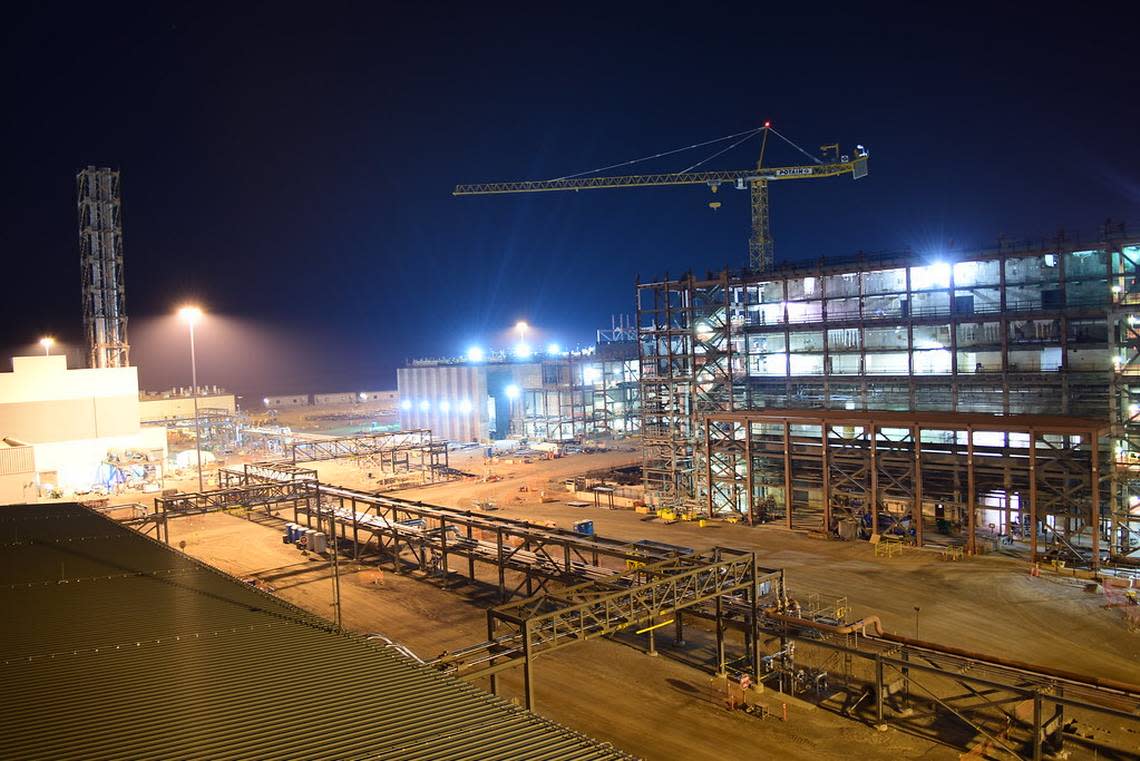WA, feds upend plan to clean up one of nation’s most costly, dangerous radioactive sites
The Department of Energy and its regulators have released a revised path forward for DOE’s most costly liability in the nation — the 56 million gallons of radioactive waste stored in leak-prone underground tanks in Eastern Washington.
The agreement took nearly four years to negotiate and was made public Monday morning.
Highlights include starting treatment of the Hanford site tank waste for disposal on the current schedule of 2025 for the least-radioactive waste and 2033 for the high-level radioactive waste.
The COVID pandemic already had caused delays for starting work the least radioactive waste.
Regulators also have agreed to turn some of that waste into a concrete-like grout, rather than immobilizing it in glass. That could potentially save billions of dollars.
But it must be shipped out of Washington state for disposal rather than being kept at Hanford as is planned for glassified low-activity radioactive waste.
The high-level tank waste is among the nation’s most dangerous nuclear waste and poses a risk to the nearby Columbia River. And it’s a complicated toxic cleanup project.
It’s also DOE’s most expensive obligation in the U.S.

The agreement would identify the next tanks to be retrieved and set deadlines for them.
The current deadline of having all 149 leak-prone single-shell tanks emptied by 2040 is unachievable. Under the proposed new deadlines 49 of the tanks would be emptied by then.
Twenty single-shell tanks have been emptied to regulatory standards since work on the first one was completed 20 years ago.
The waste has proven difficult to retrieve and there have been delays in retrieving it because of limited double-shell tank space to store that waste until it can be treated. When treatment begins more storage space will be available.
DOE would be able to remove waste from tanks and treat it for disposal without applying its controversial new interpretation of rules. Those rules would allow the agency to reclassify some high-level waste based on its radioactive concentrations.
The state of Washington, multiple Hanford watchdog groups and the Yakama Nation opposed the change that would give DOE expanded authority over classifying waste.
“We have alignment on a plan that lays out a realistic and achievable path forward for Hanford’s tank waste mission,” said Brian Vance, DOE’s Hanford manager, in a statement.
Laura Watson, director of the Washington state Department of Ecology, called the new agreement “a durable framework that aligns our agencies and accelerates work while maintaining a robust and safe cleanup.”
The agreement is commonly called the “holistic agreement.”

Public comment, meetings planned
There will be a chance for public comment and meetings will be held in Oregon and Washington before new deadlines are adopted, says DOE and its regulators, the Department of Ecology and the U.S. Environmental Protection Agency.
Mediated negotiations began four years ago after the Hanford regulator that oversees tank waste, the Department of Ecology, proposed the talks, said it was clear that DOE could not meet its legal environmental cleanup deadlines.
The deadlines are in the Tri-Party Agreement, signed by DOE, Ecology and EPA, and a 2010 federal court consent decree that resulted from a lawsuit by the state of Washington against DOE over missed Hanford deadlines.
The Hanford nuclear reservation adjacent to Richland, Wash., was used from World War II through the Cold War to produce nearly two-thirds of the plutonium for the nation’s nuclear weapons program.
Plutonium was chemically separated from uranium irradiated in Hanford reactors, leaving the mix of other radioactive material and hazardous chemicals stored in underground tanks, some since the 1940s.
No estimated cost for the remainder of environmental cleanup and treatment of the tank waste has been released with the new holistic agreement announced Monday. Costs should be included in the next Hanford Lifecycle Scope, Schedule and Cost Report, which could be released in early 2025.

Treating Hanford’s most radioactive waste
Under the holistic agreement, DOE will change its process for preparing high-level radioactive waste for treatment at the Hanford vitrification plant, similar to the process already in use to prepare low activity radioactive waste for treatment starting next year.
When construction started on the vitrification plant 22 years ago, plans called for the largest building, the Pretreatment Facility, to be used to separate tank waste into low activity and high-level waste streams for separate treatment and disposal. The less radioactive waste will go into a lined landfill and the most radioactive will be sent to a national repository yet to be sited and built.
But more recently DOE has been able to separate out some the least radioactive waste with a system set up near the tanks that uses filtration and an ion exchange system to remove the high-level waste, bypassing the unfinished Pretreatment Facility.
An analysis released in early 2023 on options for preparing high-level waste for treatment rated an option the highest that would not use the massive, partially built Pretreatment Facility if smaller facilities were built.
Today the unfinished Pretreatment Facility stands 119 feet high. It’s wider than a football field and about 1.5 times longer.
The holistic agreement calls for DOE to build a second effluent treatment facility at the vitrification plant for high-level waste treatment just as it did in preparation for the start of low activity waste treatment without using the Pretreatment Facility.
The second new building would support the High Level Waste Facility, where the most radioactive waste would be turned into a stable glass form for disposal. It would provide some of the secondary waste functions that the Pretreatment Facility was planned to handle.
DOE also would need to add a vault storage system, consisting of a couple of small tanks and support systems in a below grade vault on the waste transfer line between the tank farms and vitrification plant, to support high-level waste activities.
The future of the unfinished Pretreatment Facility would be decided after the initial vitrification of high-level waste begins.
There is still a possibility it could be used eventually, such as to wash out chemicals in high-level waste to make its treatment more efficient.
Grouting Hanford waste
DOE commits in the holistic agreement to grout the waste it empties from 22 tanks in the 200 West Area of Hanford, about seven miles from the vitrification plant at the 200 East Area of Hanford.
Those tanks would contribute toward the 29 tanks it commits to emptying to regulatory standards by 2040.
The Government Accountability Office has concluded that grouting some of the least radioactive Hanford tank waste would allow the work to be done sooner and could save tens of billions of dollars.
The vitrification plant was not planned to be large enough to treat all of the low activity tank waste in a reasonable amount of time. About 90% of the tank waste may be low activity waste.
The National Academies of Science considered how that additional low activity waste could be treated and found that grouting was a technically strong alternative.
However, an environmental study concluded that grouted waste buried in a Hanford landfill would not be as protective of groundwater that moves toward the Columbia River as glassified waste over very long periods of time.
The waste grouted from the 22 tanks would be shipped offsite for disposal, possibly to a commercial repository in Texas licensed to receive similar waste. Waste Control Specialists in Texas has salt formations devoid of water to keep grouted waste secure.
The Washington Department of Ecology would require that DOE not grout or store more waste than it is ready to ship offsite.

More in holistic agreement
Also under the agreement, DOE would develop up to two new technologies for retrieving waste from underground tanks using recommendations from an expert panel.
Now water or recycled liquid waste is most often used to sluice out waste to allow it to be removed from tanks through narrow risers that extend from the tank to the ground.
New technologies that are picked could be less risky for tanks that are currently leaking or have leaked in the past before most of their liquid waste was pumped out, leaving sludge and salt cake yet to be retrieved. Technologies also could be picked to deal with particularly difficult waste configurations in the tanks.
DOE and its regulators will revise the existing Tri-Party Agreement to retrieve waste from the tanks, close tanks emptied to regulatory standards and treat the tank waste after high-level waste treatment starts. The current, unachievable deadlines are 2040 for waste retrieval, 2043 for tank closure and 2047 for waste treatment.
The holistic agreement also would require DOE to build and open additional multipurpose storage capacity for 1 million gallons of waste in Hanford’s 200 West Area, which is far from the vitrification plant, by fall 2040.
What that space would look like, such as one large tank or several small ones, has not been determined.
The agreement includes multiple other proposed new, extended deadlines or requirements, including for activating miles-long waste transfer lines needed to get high-level waste in the 200 West Area closer to the vitrification plant for treatment; for a facility to temporarily store glassified high-level waste since the nation has no repository for it yet; and to empty two tanks in the A Tank Farm that are believed to have leaked in the past.
A 60-day public comment period on proposed changes to the federal court consent decree and the Tri-Party Agreement begins May 30. The schedule of public meetings in Washington and Oregon has yet to be announced.
